What Information Must Be Included on a Sling Identification Tag?
You could argue that a sling identification tag is the most important component of a sling assembly. Without it, you don’t have any frame of reference on the rated load and the sling’s capabilities in different hitch configurations and at different sling angles.
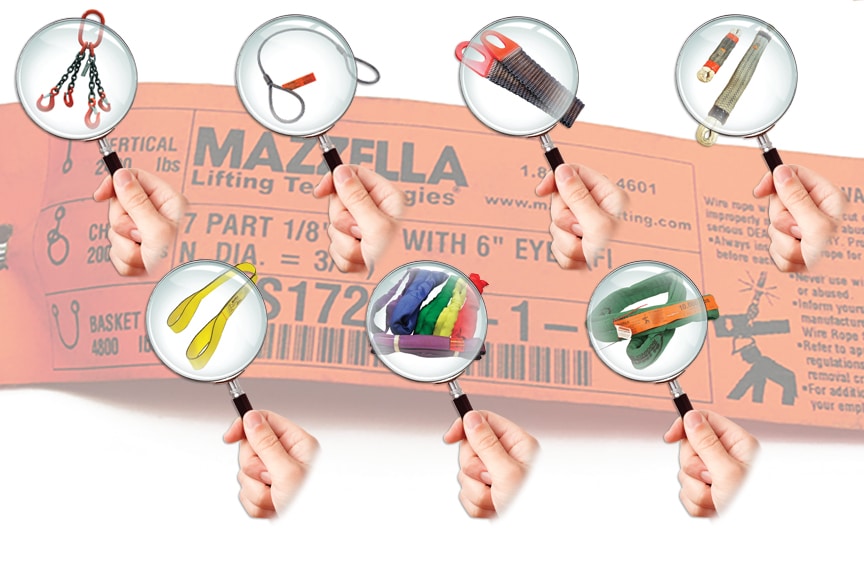
How important is a lifting sling’s identification tag? ASME B30.9 lists “missing or illegible sling identification” as the very first item under Removal Criteria for users who are inspecting any type of lifting sling.
A sling tag can provide the end-user with a wealth of valuable information, including:
- Manufacturer of the sling assembly, or the most recent entity to repair the sling
- Material the sling is manufactured from
- Rated load for at least one hitch type (and the sling angle upon which it is based)
- Individual sling identification (ex: serial number)
- Manufacturer code / stock number
- Number of legs (for bridle assemblies)
When putting a lift plan together, you can use the information on the sling tag to determine the best type of sling to use based on the rated load and the sling’s capabilities in different hitch configurations and at different sling angles.
When you perform an initial inspection of your slings, always review the information provided on the sling tag. Double-check to make sure the information on the tag matches the specifications of what you ordered and what is required for your lifting application.
Also, if you encounter an issue with a lifting sling, you can contact the manufacturer directly to initiate a repair, or reference the serial number, manufacturer code, or stock number to order a replacement piece.
In this article, we’ll explain what information is required on each type of sling identification tag, to make sure your lifting slings are marked in accordance with ASME B30.9 requirements.
Alloy Chain Sling Identification Tag Requirements
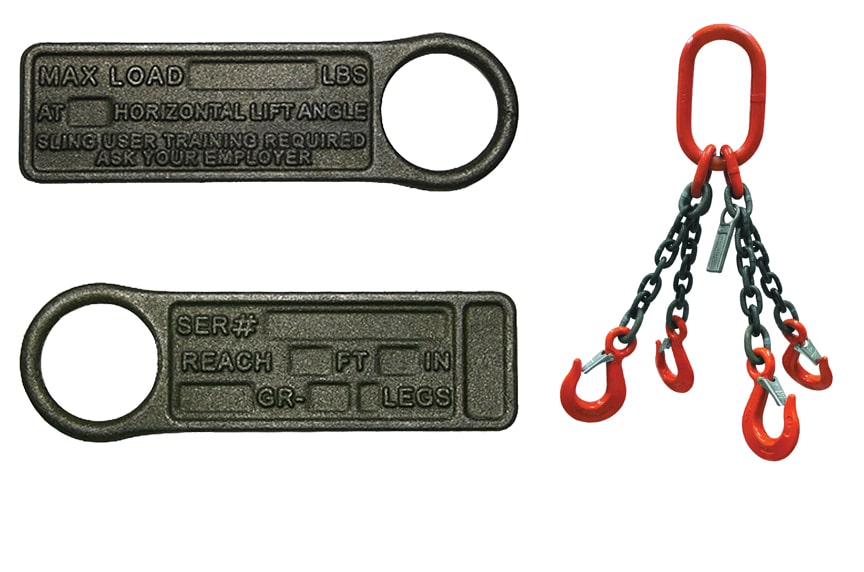
If during the course of a chain sling inspection, the user notes that the tag or identification is damaged, missing, or illegible, the alloy chain sling shall be removed from service. A replacement sling tag is considered a repair, however additional proof testing is NOT required if the tag is replaced.
Each chain sling shall be marked to show:
- Name or trademark of manufacturer, or if repaired, the entity performing repairs
- Grade
- Nominal chain size
- Number of legs
- Rated load for at least one hitch type and the angle upon which it is based
- Length (reach)
- Individual sling identification (ex: serial number)
Wire Rope Sling Identification Tag Requirements
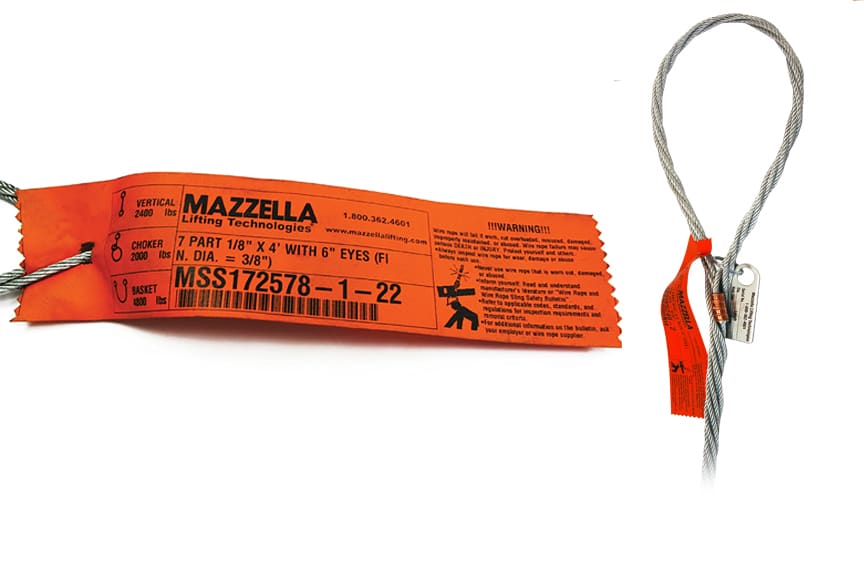
If during the course of a wire rope sling inspection, the user notes that the tag or identification is damaged, missing, or illegible, the wire rope sling shall be removed from service. A replacement sling tag is considered a repair, however additional proof testing is NOT required if the tag is replaced.
Each wire rope sling shall be marked to show:
- Name or trademark of manufacturer, or if repaired, the entity performing repairs
- Rated load for at least one hitch type and the angle upon which it is based
- Diameter or size
- Number of legs, if more than one
Metal Mesh Sling Identification Tag Requirements
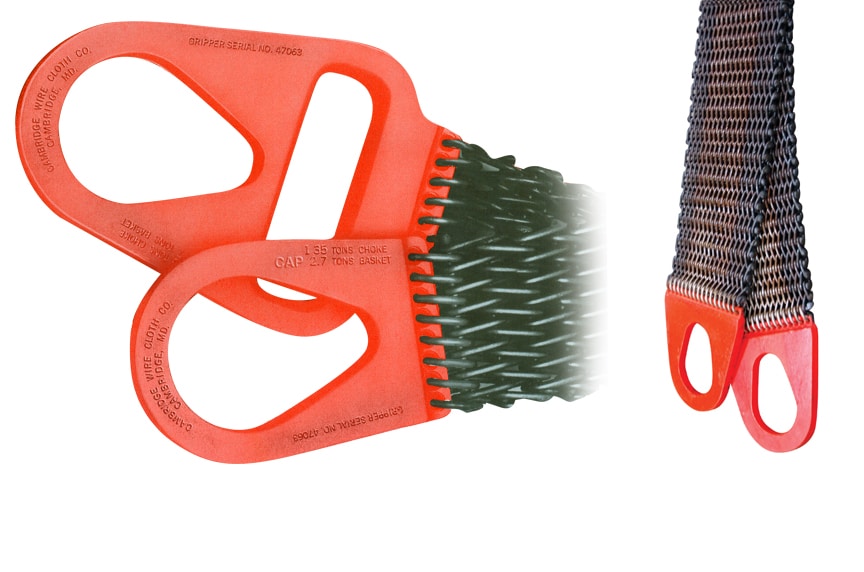
If during the course of a metal mesh sling inspection, the user notes that the tag or identification is damaged, missing, or illegible, the metal mesh sling shall be removed from service. A replacement tag is considered a repair, however additional proof testing is NOT required if the tag is replaced.
Each metal mesh sling shall be marked to show:
- Name or trademark of manufacturer, or if repaired, the entity performing repairs
- Rated load for at least one hitch type and the angle upon which it is based
- Individual sling identification (ex: serial number)
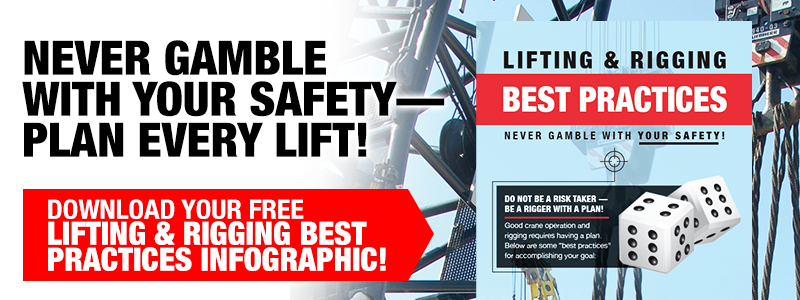
Synthetic Rope Sling Identification Tag Requirements
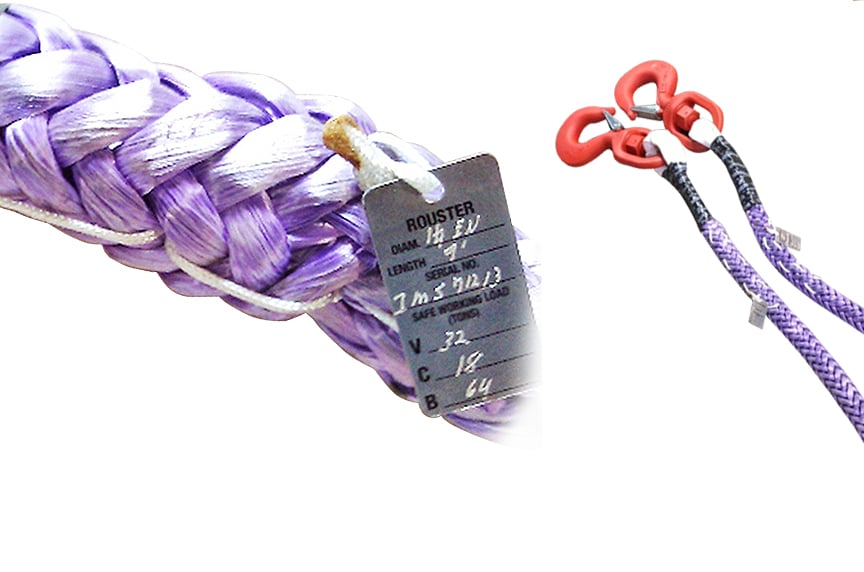
If during the course of a synthetic rope sling inspection, the user notes that the tag or identification is damaged, missing, or illegible, the synthetic rope sling shall be removed from service. A replacement tag is considered a repair, however additional proof testing is NOT required if the tag is replaced.
Each synthetic rope sling shall be marked to show:
- Name or trademark of manufacturer, or if repaired, the entity performing repairs
- Manufacturer’s code or stock number
- Rated loads for at least one hitch type and the angle upon which it is based
- Type of fiber material
- Number of legs, if more than one
Synthetic Web Sling Identification Tag Requirements
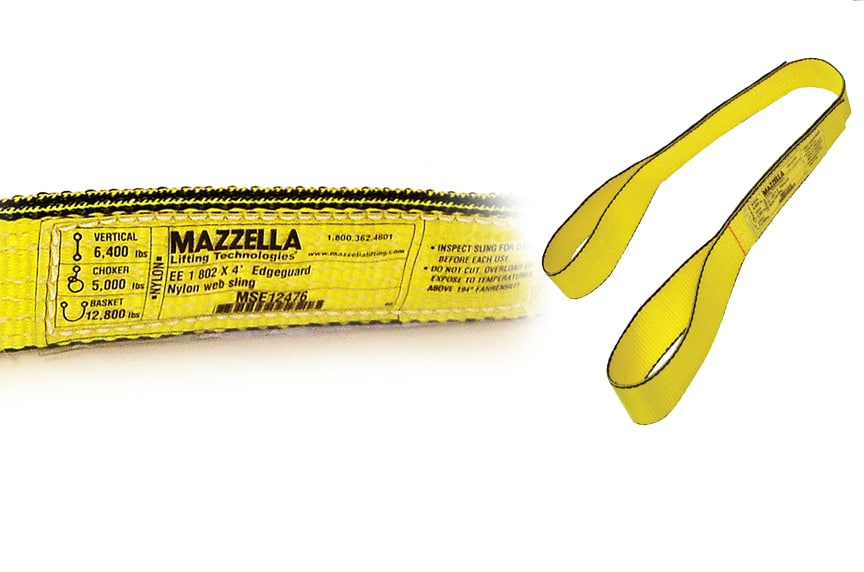
If during the course of a synthetic web sling inspection, the user notes that the tag or identification is damaged, missing, or illegible, the synthetic web sling shall be removed from service. A replacement tag is considered a repair, however additional proof testing is NOT required if the tag is replaced.
Each synthetic web sling shall be marked to show:
- Name or trademark of manufacturer, or if repaired, the entity performing repairs
- Manufacturer’s code or stock number
- Rated load for at least one hitch type and the angle upon which it is based
- Type of synthetic web material
- Number of legs, if more than one
Polyester Roundsling Identification Tag Requirements
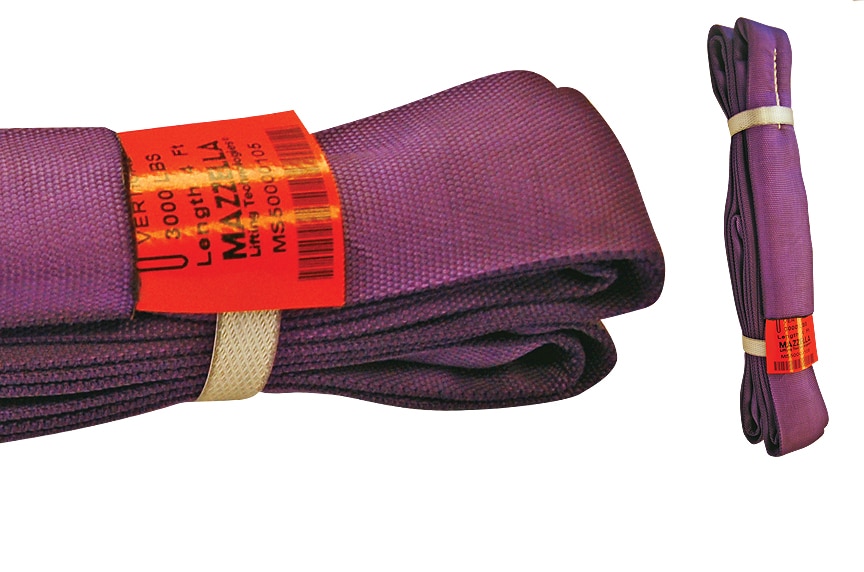
If during the course of a polyester roundsling inspection, the user notes that the tag or identification is damaged, missing, or illegible, the synthetic roundsling shall be removed from service. A replacement tag is considered a repair, however additional proof testing is NOT required if the tag is replaced.
Each polyester roundsling shall be marked to show:
- Name or trademark of manufacturer, or if repaired, the entity performing repairs
- Manufacturers’ code or stock number
- Rated load for at least one hitch type and the angle upon which it is based
- Core material
- Cover material, if different from core material
- Number of legs, if more than one
High-Performance Roundsling Identification Tag Requirements
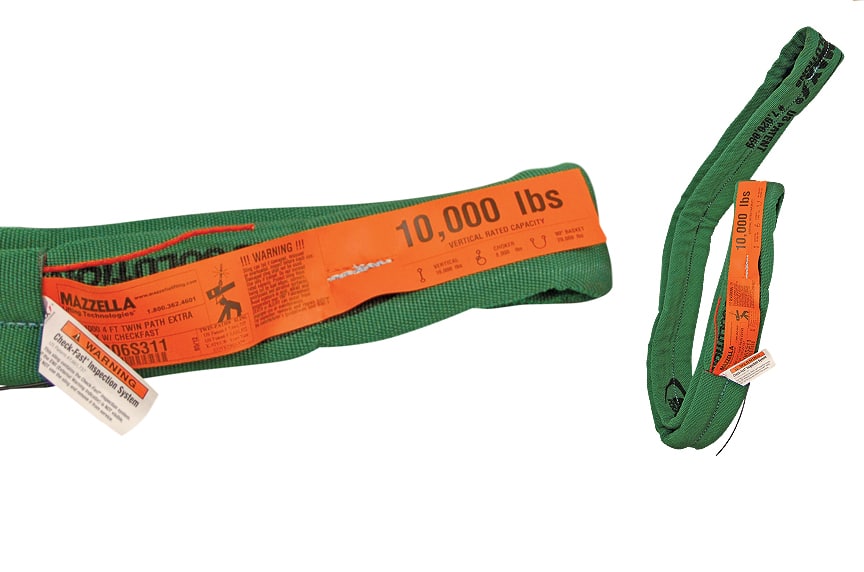
If during the course of a high-performance roundsling inspection, the user notes that the tag or identification is damaged, missing, or illegible, the high-performance roundsling shall be removed from service. A replacement tag is considered a repair, however additional proof testing is NOT required if the tag is replaced.
Each high-performance roundsling shall be marked to show:
- Name or trademark of manufacturer, or if repaired, the entity performing repairs
- Manufacturer’s code or stock number
- Rated load for at least one hitch type and the angle upon which it is based
- Core yarn – fiber type(s) or blend
- Cover material, if different from core material
- Number of legs, if more than one
Wrapping it Up
You could argue that a sling identification tag is the most important component of a sling assembly. Without it, you don’t have any frame of reference on the rated load and the sling’s capabilities in different hitch configurations and at different sling angles.
If you notice that the identification tag on your sling has become damaged, illegible, or is missing entirely, immediately remove the sling from service and quarantine or mark it to discourage further use.
Notify a Qualified person to inspect the sling and make a determination on if it shall be retired, or if it can be repaired and returned to service.
At Mazzella, we sell and manufacture all types of lifting slings. Our Duraklear™ identification tag is among the most durable tags on the market for web slings. We also have a team of certified rigging inspectors who can perform Periodic inspections of your lifting slings, rigging hardware, chain falls and lever hoists, and below-the-hook lifting devices.
If you have any questions about ASME or OSHA compliance, or are interested in a consultation on the equipment you use for material handling or overhead lifts, contact a Lifting Specialist today!
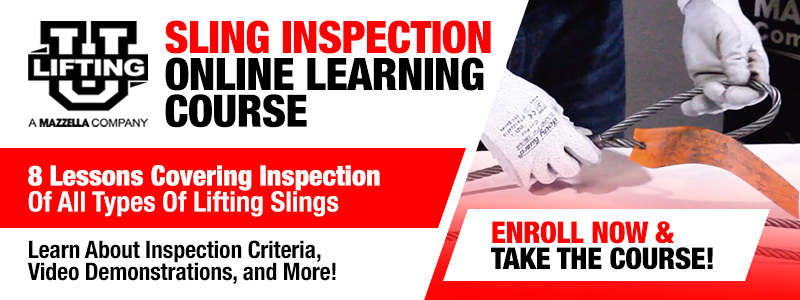

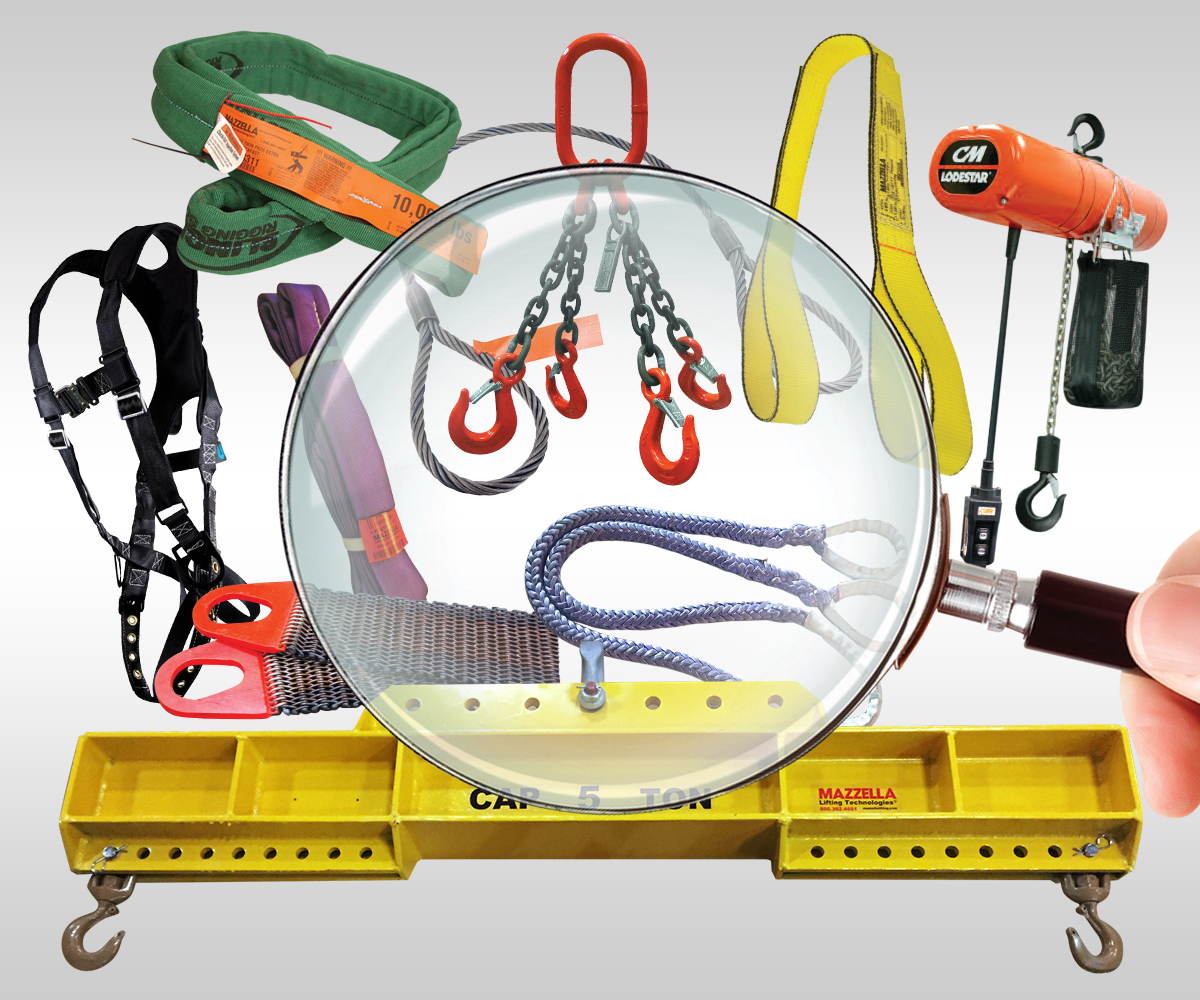
Rigging Inspection Services
OSHA 1910.184, ASME B30.9, B30.20, B30.26, & ANSI Z359 require periodic, documented inspections on slings, rigging hardware, lifting devices, and fall protection every 12 months, at minimum, and monthly to quarterly in more severe service conditions.
Call us at 800.362.4601 or click here if you need inspections for slings, rigging hardware, lifting devices, or fall protection!
Copyright 2019. Mazzella Companies.
